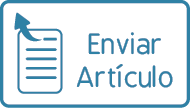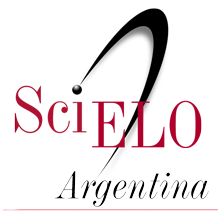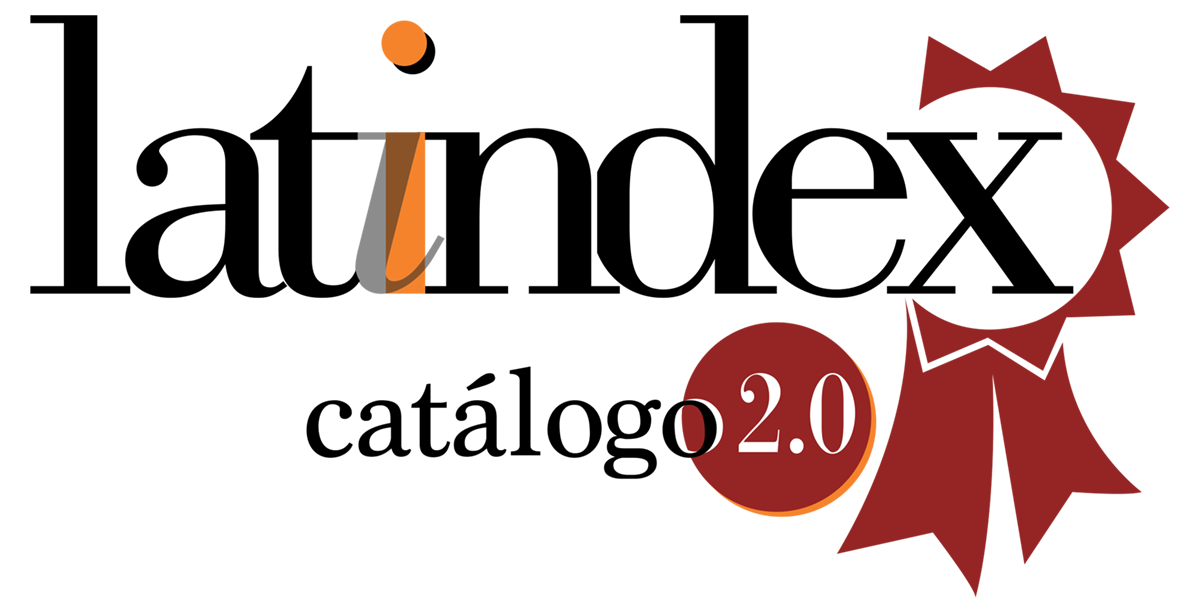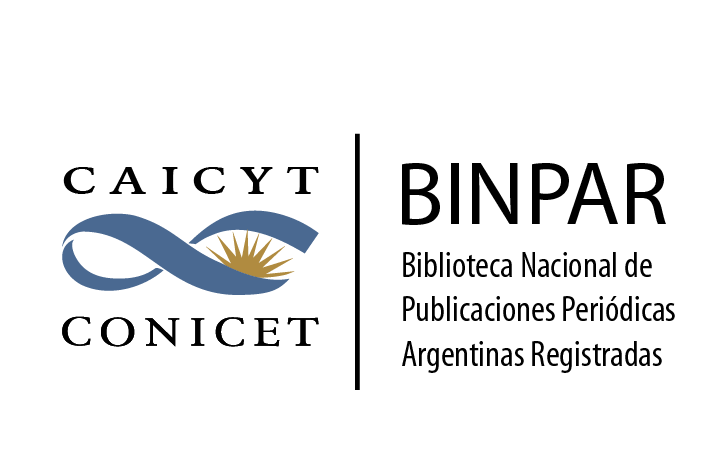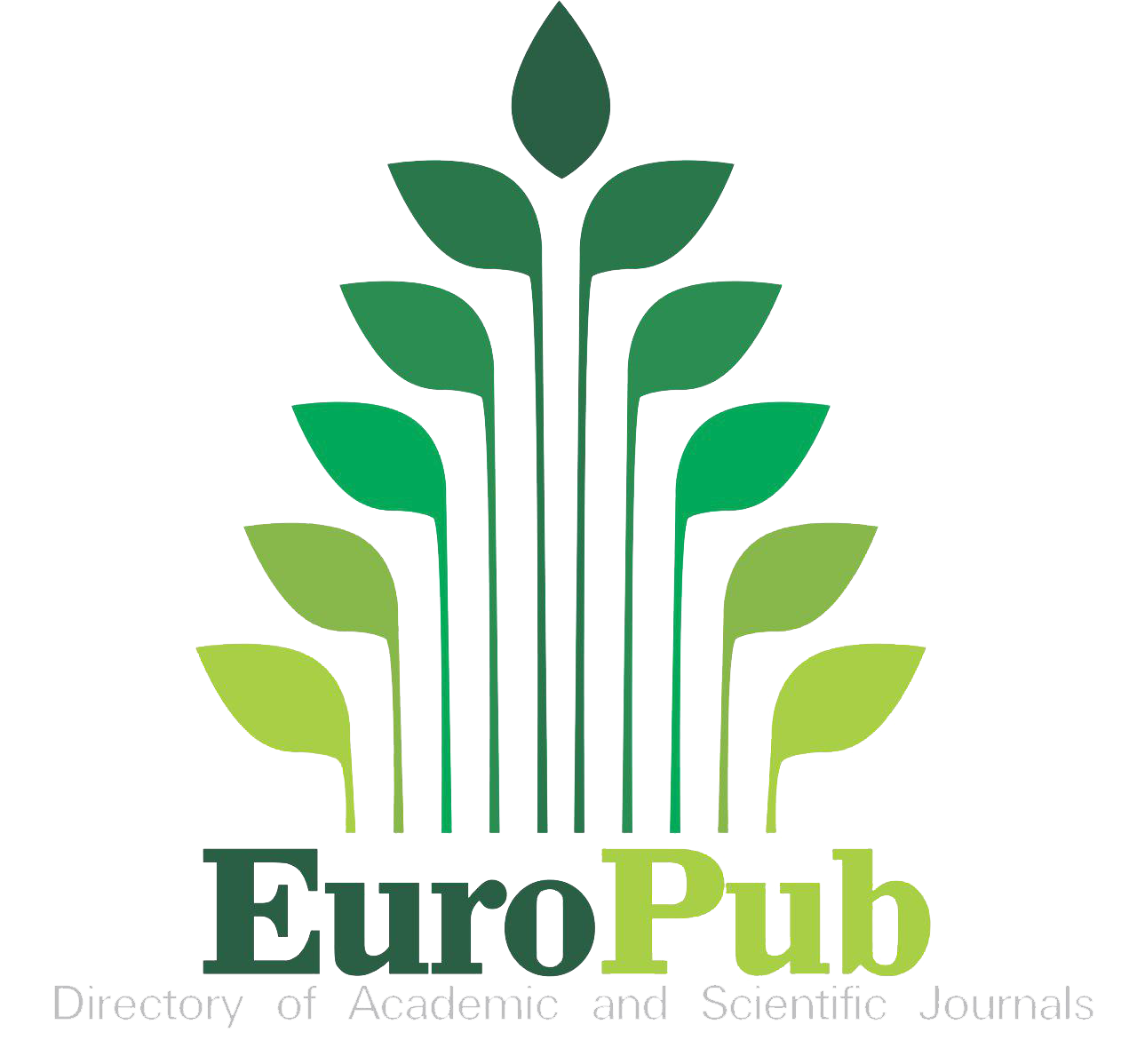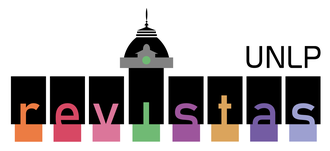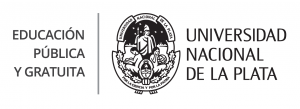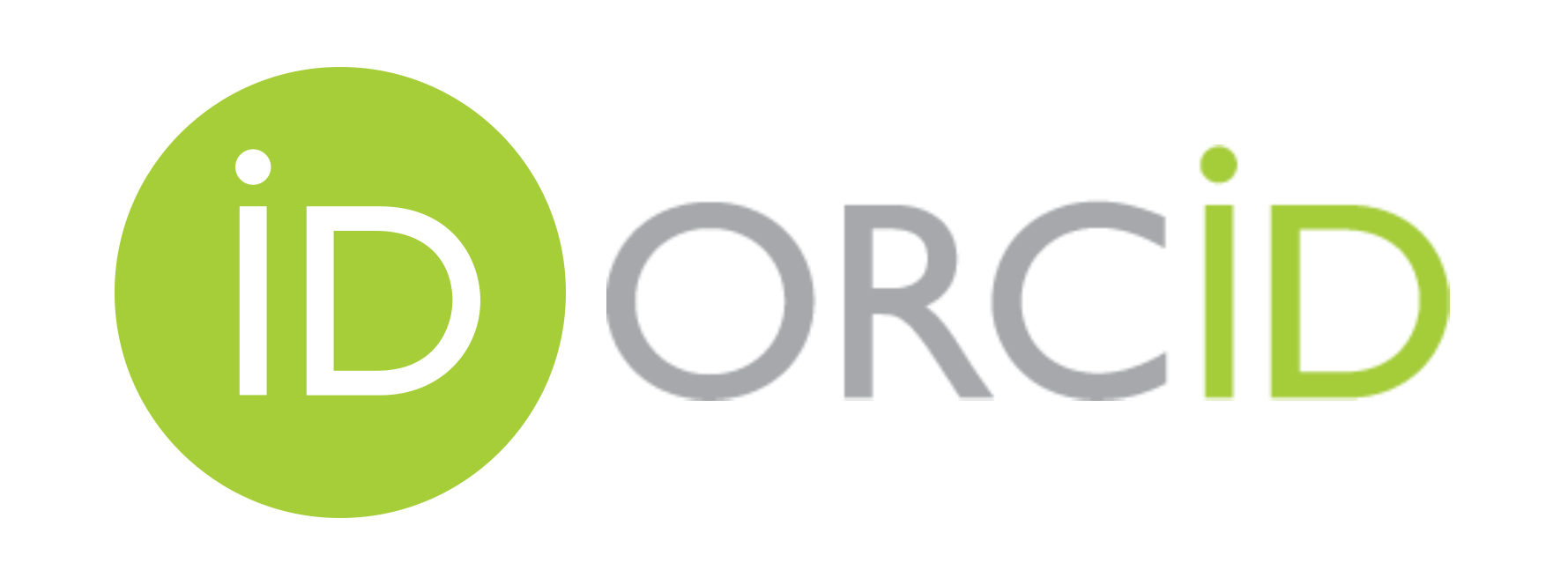Factores de crecimiento similares a insulina en la placenta de la gata
DOI:
https://doi.org/10.24215/15142590e090Palabras clave:
gata, placenta, factores de crecimiento similares a la insulina, células trofoblásticas, inmunohostoquímicaResumen
La señalización materno-fetal durante el desarrollo placentario es un tema poco investigado en reproducción felina. Los factores de crecimiento similares a insulina (IGF) son importantes reguladores del desarrollo, escasamente estudiados en placentas endoteliocoriales. La expresión placentaria de IGFs y del receptor IGF tipo 1 (IGFR1) ya se ha descrito en perras; en gatas solo se han descrito en el útero. El objetivo de este estudio fue detectar IGF1, IGF2 e IGFR1 en estructuras placentarias fetales y maternas. Veintitrés muestras de placentas fueron clasificadas en dos grupos, según la edad gestacional (G1: ≤43 d.p.c; G2: ≥44 d.p.c); las mismas se procesaron mediante inmunohistoquímica indirecta. La marcación con todos los anticuerpos fue más intensa en las glándulas endometriales de placentas tempranas que en tardías. El endotelio materno se marcó de manera moderada a fuerte, con intensidad decreciente hacia los vasos del endometrio. Las células del citotrofoblasto se marcaron más que el sincitiotrofoblasto. IGF1 e IGF1R fueron más abundantes en las células deciduales de las placentas tardías. Estos resultados permiten sostener la centralidad del sistema IGF durante el desarrollo placentario felino. Según nuestro conocimiento, este es el primer trabajo que informa y describe la detección inmunohistoquímica de IGFs/IGFR1 en regiones fetales de la placenta felina.
Descargas
Métricas
Citas
Ağaoğlu OK, Ağaoğlu AR, Guzeloglu A, Aslan S, Kurar E, Kayis SA, Schäfer-Somi S. 2016. Gene expression profiles of some cytokines, growth factors, receptors, and enzymes (GM-CSF, IFNγ, MMP‑2, IGF-II, EGF, TGF-β, IGF-IIR) during pregnancy in the cat uterus. Theriogenology. 85(4):638-44. http://dx.doi.org/10.1016/jtheriogenology.2015.10.001
Ağaoğlu OK, Ağaoğlu AR, Özmen Ö, Saatci M, Schäfer-Somi S, Aslan S. 2021. Expression of the insulin-like growth factors (IGF) gene family in feline uterus during pregnancy. Biotechnic & Histochemistry. 96(6):439–49. http://dx.doi.org/10.1080/10520295.2020.1818285
Arai KY, Tanaka Y, Taniyama H, Tsunoda N, Nambo Y, Nagamine N, Watanabe G, Taya K. 2006. Expression of inhibins, activins, insulin-like growth factor-I and steroidogenic enzymes in the equine placenta. Domestic Animal Endocrinology. 31(1):19-34. https://doi.org/10.1016/j.domaniend.2005.09.005
Bach LA. 2015. Endothelial cells and the IGF system. Journal of Molecular Endocrinology. 54(1):R1-R13. http://dx.doi.org/10.1530/JME-14-0215
Baravalle ME, Stassi AF, Velázquez MML, Belotti EM, Rodríguez FM, Ortega HH, Salvetti NR. 2015. Altered expression of pro-inflammatory cytokines in ovarian follicles of cows with cystic ovarian disease. Journal of Comparative Pathology. 153(2-3):116-30. http://dx.doi.org/10.1016/j.jcpa.2015.04.007
Boomsma RA, Mavrogianis PA, Fazleabas AT, Jaffe RC, Verhage HG. 1994. Detection of insulin-like growth factor binding protein-1 in cat implantation sites. Biology of Reproduction. 51(3):392-99. http://dx.doi.org/10.1095/biolreprod51.3.392
Bowman CJ, Streck RD, Chapin RE. 2010. Maternal-placental insulin-like growth factor (IGF) signaling and its importance to normal embryo-fetal development. Birth Defects Research. Part B, Developmental and Reproductive Toxicology. 89(4):339-49. http://dx.doi.org/10.1002/bdrb.20249
Cherif-Feildel M, Berthelin CH, Rivière G, Favrel P, Kellner K. 2019. Data for evolutive analysis of insulin related peptides in bilaterian species. Data in Brief. 22:546-50. http://dx.doi.org/10.1016/j.dib.2018.12.050
Dhara S, Lalitkumar PGL, Sengupta J, Ghosh D. 2001. Immunohistochemical localization of insulin-like growth factors I and II at the primary implantation site in the Rhesus monkey. Molecular Human Reproduction. 7(4):365-71. http://dx.doi.org/10.1093/molehr/7.4.365
Diessler M, Ventureira M, Hernández R, Sobarzo C, Casas L, Barbeito C, Cebral E. 2017. Differential expression and activity of matrix metalloprotease-2 and -9 in canine early placenta. Reproduction in Domestic Animals. 52(1):35-43. http://dx.doi.org/10.1111/rda.12791
Diessler ME, Idiart JR, Portiansky EL. 2007. Metástasis y angiogénesis en carcinomas mamarios invasivos de perras diagnosticados entre 1980 y 2003. Estudios histológicos e inmunohistoquímicos. Analecta Veterinaria. 27(1):5-10. http://sedici.unlp.edu.ar/handle/10915/11197
Dubova EA, Pavlov KA, Lyapin VM, Kulikova GV, Shchyogolev AI, Sukhikh GT. 2014. Expression of insulin-like growth factors in the placenta in pre-eclampsia. Bulletin of Experimental Biology and Medicine. 157(1):103-107. http://dx.doi.org/10.1007/s10517-014-2502-4
Ellery PM, Cindrova-Davies T, Jauniaux E, Ferguson-Smith AC, Burton GJ. 2009. Evidence for transcriptional activity in the syncytiotrophoblast of the human placenta. Placenta. 30(4):329-34. http://dx.doi.org/10.1016/j.placenta.2009.01.002
Evans HE, Sack WO. 1973. Prenatal development of domestic and laboratory mammals: growth curves, external features and selected references. Zentralblatt fur Veterinarmedizin. Reihe C: Anatomie, Histologie, Embryologie. 2(1):11-45. http://dx.doi.org/10.1111/j.1439-0264.1973.tb00253.x
Fogarty NME, Mayhew TM, Ferguson-Smith AC, Burton GJ. 2011. A quantitative analysis of transcriptionally active syncytiotrophoblast nuclei across human gestation. Journal of Anatomy. 219(5):601-10. http://dx.doi.org/ 10.1111/j.1469-7580.2011.01417.x
Forbes K, Westwood M. 2008. The IGF axis and placental function: a mini review. Hormone Research. 69(3):129-37.
Forbes K, Westwood M, Baker PN, Aplin JD. 2008. Insulin-like growth factor I and II regulate the life cycle of trophoblast in the developing human placenta. American Journal of Physiology-Cell Physiology. 294(6):C1313-22. http://dx.doi.org/10.1152/ajpcell.00035.2008
Freese LG, Rehfeldt C, Fuerbass R, Kuhn G, Okamura CS, Ender K, Grant AL, Gerrard DE. 2005. Exogenous somatotropin alters IGF axis in porcine endometrium and placenta. Domestic Animal Endocrinology. 29(3):457-75. http://dx.doi.org/10.1016/j.domaniend.2005.02.012
Guzeloglu-Kayisli O, Kayisli UA, Taylor HS. 2009. The role of growth factors and cytokines during implantation: endocrine and paracrine interactions. Seminars in Reproductive Medicine. 27(1):62-79. http://dx.doi.org/10.1055/s-0028-1108011
Han VKM, Carter AM. 2000. Spatial and temporal patterns of expression of messenger RNA for insulin-like growth factors and their binding proteins in the placenta of man and laboratory animals. Placenta. 21(4):289-305. http://dx.doi.org/10.1053/plac.1999.0498
Harris LK, Pantham P, Yong HEJ, Pratt A, Borg AJ, Crocker I, Westwood M, Aplin J, Kalionis B, Murthi P. 2019. The role of insulin-like growth factor 2 receptor-mediated homeobox gene expression in human placental apoptosis, and its implications in idiopathic fetal growth restriction. Molecular Human Reproduction. 25(9):572-85. http://dx.doi.org/10.1093/molehr/gaz047
Hayati AR, Cheah FC, Tan AE, Tan GC. 2007.Insulin-like growth factor-1 receptor expression in the placentae of diabetic and normal pregnancies. Early Human Development. 83(1):41-6. http://dx.doi.org/10.1016/j.earlhumdev.2006.04.002
Hernández R, Barbeito C, Diessler M. 2019. Immunohistochemical detection of prolactin and prolactin receptor in canine and feline placentae. Placenta.83:e71-e73. https://doi.org/10.1016/j.placenta.2019.06.229
Hernández R, Gareis N, Stassi A, Blois SM, Fernández P, Zanuzzi C, Rey F, Barbeito CG, Diessler M. 2017. Insulin- like growth factor binding protein-1, galectin-9, vimentin, desmin and α-actin expression in decidualized stromal cells from canine and feline placental labyrinth. Placenta. 51:122. http://dx.doi.org/10.1016/j.placenta.2017.01.082
Hernández R, Rodríguez FM, Gareis NC, Rey F, Barbeito CG, Diessler M. 2020. Abundance of insulin-like growth factors 1 and 2, and type 1 insulin-like growth factor receptor in placentas of dogs. Animal Reproduction Science. 221:106554. http://dx.doi.org/10.1016/j.anireprosci.2020.106554
Herr F, Baal N, Zygmunt M. 2009. Studies of placental vasculogenesis: a way to understand pregnancy pathology?
Zeitschrift für Geburtshilfe und Neonatologie. 213(3):96-100. http://dx.doi.org/10.1055/s-0029-1224141
Herr F, Liang OD, Herrero J, Lang U, Preissner KT, Han VKM., Zygmunt M. 2003. Possible angiogenic roles of insulin-like growth factor II and its receptors in uterine vascular adaptation to pregnancy. The Journal of Clinical Endocrinology & Metabolism. 88(10):4811-7. http://dx.doi.org/10.1210/jc.2003-030243
Hess AP, Hamilton AE, Talbi S, Dosiou C, Nyegaard M, Nayak N, Genbecev-Krtolica O, Mavrogianis P, Ferrer K, Kruessel J, Fazleabas AT, Fisher SJ, Giudice LC. 2007. Decidual stromal cell response to paracrine signals from the trophoblast: amplification of immune and angiogenic modulators. Biology of Reproduction. 76(1):102-17. http://dx.doi.org/10.1095/biolreprod.106.054791
Hidden U, Glitzner E, Harttmann M, Desoye G. 2009. Insulin and the IGF system in the human placenta of normal and diabetic pregnancies. Journal of Anatomy. 215(1):60-8. http://dx.doi.org/10.1111/j.1469-7580.2008.01035.x
Hill DJ, Clemmons DR, Riley SC, Bassett N, Challis JRG. 1993. Immunohistochemical localization of insulin-like growth factors (IGFs) and IGF binding proteins--1, -2 and -3 in human placenta and fetal membranes. Placenta. 14(1):1-12. http://dx.doi.org/10.1016/s0143-4004(05)80244-9
Hills FA, Elder MG, Chard T, Sullivan MHF. 2004. Regulation of human villous trophoblast by insulin-like growth factors and insulin-like growth factor-binding protein-1. Journal of Endocrinology. 183(3):487-96. http:// dx.doi.org/10.1677/joe.1.05867
Huppertz B. 2010. IFPA Award in Placentology Lecture: biology of the placental syncytiotrophoblast – myths and facts. Placenta. 31:S75–S81. http://dx.doi.org/10.1016/j.placenta.2009.12.001
Huynh H. 2000. Posttranscriptional and posttranslational regulation of insulin-like growth factor binding protein-3 and -4 by insulin-like growth factor-I in uterine myometrial cells. Growth Hormone & IGF Research. 10(1):20-7. http://dx.doi.org/10.1054/ghir.2000.0137
Igwebuike UM. 2010. Impact of maternal nutrition on ovine foetoplacental development: a review of the role of insulin-like growth factors. Animal Reproduction Science. 121(3-4):189-96. http://dx.doi.org/10.1016/j.anireprosci.2010.04.007
Kautz E, de Carvalho Papa P, Reichler IM, Gram A, Boos A, Kowalewski MP. 2015. In vitro decidualisation of canine uterine stromal cells. Reproductive Biology and Endocrinology. 13-85. http://dx.doi.org/10.1186/ s12958-015-0066-4
Kautz E, Gram A, Aslan S, Ay SS, Selçuk M, Kanca H, Koldaş E, Akal E, Karakaş K, Findik M, Boos A, Kowalewski MP. 2014. Expression of genes involved in the embryo-maternal interaction in the early-pregnant canine uterus. Reproduction. 147(5):703-17. http://dx.doi.org/10.1530/REP-13-0648
Knospe C. 2002. Periods and stages of the prenatal development of the domestic cat. Anatomia, Histology, Embryology. 31(1):37-51. http://dx.doi.org/10.1046/j.1439-0264.2002.00360.x
Leiser R, Koob B. 1993. Development and characteristics of placentation in a carnivore, the domestic cat. Journal of Experimental Zoology. 266(6):642-56. http://dx.doi.org/10.1002/jez.1402660612
Lennard SN, Stewart F, Allen WR. 1995. Insulin-like growth factor II gene expression in the fetus and placenta of the horse during the first half of gestation. Journal of Reproduction and Fertility. 103(1):169-79. http://dx.doi.org/10.1530/jrf.0.1030169
LeRoith D, Holly JMP, Forbes BE. 2021. Insulin-like growth factors: Ligands, binding proteins, and receptors. Molecular Metabolism. 52:101245. http://dx.doi.org/10.1016/j.molmet.2021.101245
Liu X, Hu Q, Liu S, Tallo LJ, Sadzewicz L, Schettine CA, Nikiforov M, Klyushnenkova EN, Ionov Y. 2013. Serum antibody repertoire profiling using in silico antigen screen. PLoS One. 8(6):e67181. http://dx.doi.org/10.1371/ journal.pone.0067181
Martín-Estal I, Castilla-Cortázar I, Castorena-Torres F. 2021. The placenta as a target for alcohol during pregnancy: the close relation with IGFs signaling pathway. Reviews of Physiology, Biochemistry and Pharmacology. 180:119-53. http://dx.doi.org/10.1007/112_2021_58
Pieri N, Souza AF, Casals JB, Roballo K, Ambrosio CE, Martins DS. 2015. Comparative development of embryonic age by organogenesis in domestic dogs and cats. Reproduction in Domestic Animals. 50(4):625-31. http://dx.doi.org/10.1111/rda.12539
Pollheimer J, Haslinger P, Fock V, Prast J, Saleh L, Biadasiewicz K, Jetne-Edelmann R, Haraldsen G, Haider S, Hirtenlehner-Ferber K, Knöfler M. 2011. Endostatin suppresses IGF-II-mediated signaling and invasion of human extravillous trophoblasts. Endocrinology. 152(11):4431-42. http://dx.doi.org/10.1210/en.2011-1196
Rentería ME, Gandhi NS, Vinuesa P, Helmerhorst E, Mancera RL. 2008. A comparative structural bioinformatics analysis of the insulin receptor family ectodomain based on phylogenetic information. PLoS One. 3(11):e3667. http://dx.doi.org/10.1371/journal.pone.0003667
Roberts CT, Owens JA, Sferruzzi-Perri AN. 2008. Distinct actions of insulin-like growth factors (IGFs) on placental development and fetal growth: lessons from mice and guinea pigs. Placenta. 29(Suppl. A):S42-S47. http://dx.doi.org/10.1016/j.placenta.2007.12.002
Roncador G, Engel P, Maestre L, Anderson AP, Cordell JL, Cragg MS, Šerbec VK, Jones M, Lisnic VJ, Kremer L, Li D, Koch-Nolte F, Pascual N, Rodríguez-Barbosa JI, Torensma R, Turley H, Pulford K, Banham AH. 2015. The European antibody network’s practical guide to finding and validating suitable antibodies for research. mAabs. 8(1):27-36. http://dx.doi.org/10.1080/19420862.2015.1100787
Santos LC, Dos Anjos Cordeiro JM, da Silva Santana L, Santos BR, Barbosa EM, da Silva TQM, Corrêa JMX, Niella RV, Lavor MSL, da Silva EB, de Melo Ocarino N, Serakides R, Silva JF. 2021. Kisspeptin/Kiss1r system and angiogenic and immunological mediators at the maternal-fetal interface of domestic cats. Biology of Reproduction. 105(1):217-31. http://dx.doi.org/10.1093/biolre/ioab061
Sferruzzi-Perri AN, Owens JA, Pringle KG, Roberts CT. 2011. The neglected role of insulin-like growth factors in the maternal circulation regulating fetal growth. The Journal of Physiology. 589(1):7-20. http://dx.doi.org/10.1113/ jphysiol.2010.198622
Sferruzzi-Perri AN, Sandovici I, Constancia M, Fowden AL. 2017. Placental phenotype and the insulin-like growth factors: resource allocation to fetal growth. The Journal of Physiology. 595:5057-93. http://dx.doi.org/10.1113/ JP273330
Sferruzzi-Perri AN. 2018. Regulating needs: exploring the role of insulin-like growth factor-2 signalling in materno- fetal resource allocation. Placenta. 64(1):S16-S22. http://dx.doi.org/ 10.1016/j.placenta.2018.01.005
Sharma S, Godbole G, Modi D. 2016. Decidual control of trophoblast invasion. American Journal of Reproductive Immunology. 75(3):341-50. http://dx.doi.org/10.1111/aji.12466
Shynlova O, Tsui P, Dorogin A, Lowell Langille B, Lye SL. 2007. Insulin-like growth factors and their binding proteins define specific phases of myometrial differentiation during pregnancy in the rat. Biology of Reproduction. 76(4):571-8. http://dx.doi.org/10.1095/biolreprod.106.056929
Shynlova O, Tsui P, Jaffer S, Lye SL. 2009. Integration of endocrine and mechanical signals in the regulation of myometrial functions during pregnancy and labor. European Journal of Obstetrics & Gynecology and Reproductive Biology. 144(1):S2-S10. http://dx.doi.044org/10.1016/j.ejogrb.2009.02.
Simmen FA, Simmen RC, Geisert RD, Martinat-Botte F, Bazer FW, Terqui M. 1992. Differential expression, during the estrous cycle and pre- and post- implantation conceptus development, of messenger ribonucleic acids encoding components of the pig uterine insulin-like growth factor system. Endocrinology. 130(3):1547-56. http://dx.doi.org/10.1210/endo.130.3.1537304
Stassi AF, Gasser F, Velázquez MML, Belotti EM, Gareis NC, Rey F, Ortega HH, Salvetti NR, Baravalle ME. 2019. Contribution of the VEGF system to the follicular persistence associated with bovine cystic ovaries. Theriogenology. 138:52-65. http://dx.doi.org/10.1016/j.theriogenology.2019.07.002
Tang XM, Rossi MJ, Masterson BJ, Chegini N. 1994. Insulin-like growth factor I (IGF-I), IGF-I receptors, and IGF binding proteins 1-4 in human uterine tissue: tissue localization and IGF-I action in endometrial stromal and myometrial smooth muscle cells in vitro. Biology of Reproduction. 50(5):1113-25. http://dx.doi.org/10.1095/ biolreprod50.5.1113
Troja W, Kil K, Klanke C, Jones HN. 2014. Interaction between human placental microvascular endothelial cells and a model of human trophoblasts: effects on growth cycle and angiogenic profile. Physiological Reports. 2(3):e00244. http://dx.doi.org/10.1002/phy2.244
Wooding FB, Stewart F, Mathias S, Allen WR. 2005. Placentation in the African elephant, Loxodonta africanus: III. Ultrastructural and functional features of the placenta. Placenta. 26(6):449-70. http://dx.doi.org/10.1016/ j.placenta.2004.08.007
Wooding P, Burton G. 2008. Comparative placentation: structures, functions, and evolution. Springer Berlin, Heidelberg. https://doi.org/10.1007/978-3-540-78797-6
Zollers Jr. WG, Babischkin JS, Pepe GJ, Albrecht ED. 2001. Developmental regulation of placental insulin-like growth factor (IGF)-II and IGF-binding protein-1 and -2 messenger RNA expression during primate pregnancy. Biology of Reproduction. 65(4):1208-14. http://dx.doi.org/10.1095/biolreprod65.4.1208.
Descargas
Publicado
Cómo citar
Número
Sección
Licencia
Derechos de autor 2025 Rocío Hernández, Gimena Gomez Castro, Fernanda Mariel Rodriguez, Luciano Casas, Enrique Portiansky

Esta obra está bajo una licencia internacional Creative Commons Atribución-NoComercial-SinDerivadas 4.0.
Los autores/as conservan los derechos de autor y ceden a la revista el derecho de la primera publicación, con el trabajo registrado con la licencia de atribución de Creative Commons, que permite a terceros utilizar lo publicado siempre que mencionen la autoría del trabajo y a la primera publicación en esta revista.

Analecta Veterinaria por Facultad de Ciencias Veterinarias se distribuye bajo una Licencia Creative Commons Atribución-NoComercial-SinDerivar 4.0 Internacional.


